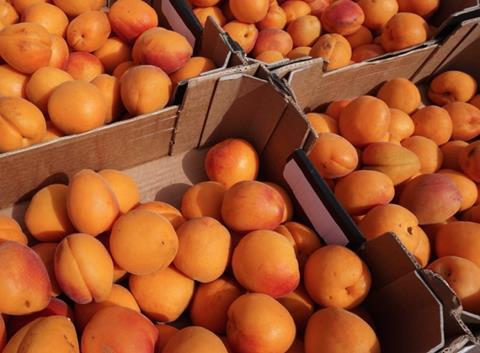
Early forecasts published at the annual industry event Europêch in Perpignan, France, suggest Europe’s apricot production will be around 4 per cent lower than the five-year average for 2009-2013 at just below 510,000 tonnes.
Click here to download the 2015 European stonefruit forecastandclick here to download the 2015 European apricot forecast.
The news preceded a subsequent meeting where forecasts were made for peaches, nectarines and clingstone varieties.
According to Italian agency CSO, the downturn in production of the apricots in 2015 is likely to affect all varieties and production areas more or less equally.
In contrast to last year’s abundant crop, this season’s fall in output is being blamed on a lack of cold weather during winter and, in some cases, too much rainfall during flowering.
Harvesting is also expected to be delayed by around 7-10 days, it is understood.
In Italy, production is set to be 7 per cent lower year on year and about 12 per cent down on the five-year average.
Greece, meanwhile, is expected to turn out a crop that is 13 per cent smaller than in 2014, due to poor weather.
Over in Spain, however, producers reckon on harvesting almost 100,000 tonnes – representing a 12 per cent increase compared with last season and a 21 per cent hike against 2009-2013.
That’s being attributed to favourable weather conditions during the growing period as well as an expansion of planted area coming into full production in the north – Aragon and Catalonia in particular.
In France, finally, the crop is forecast to be 4 per cent down on 2014 but 2 per cent larger than the five-year figure.
Here especially, warm winter temperatures and frequent rainfall during the blossoming period had a negative impact on fruit set for several varieties.
A spokeperson for CSO commented: “The late harvesting compared with 2014 in all of Europe’s major production areas makes it a full evaluation of the crop difficult, so assessments like the ones shared by the various producing countries at Europêch are to be considered as a first estimate that will subsequently be revised and verified as part of our production forecasting activities.”



